“What bike wheel size do I need?” is a crucial question akin to selecting the perfect pair of shoes. It’s not just about aesthetics; it profoundly impacts your riding experience.
The wheel diameter directly influences speed, stability, comfort, and maneuverability. Whether you’re navigating city streets or tackling off-road trails, understanding wheel size variations is aptly vital.
Choosing the right size can be the deciding factor between a smooth or challenging ride. By delving into the significance of this choice, you can aptly eliminate the need to search, “What bike wheel size do I need?”
Let’s help you make an informed decision for a biking experience that perfectly aligns with your preferences and riding style in every aspect.
Measuring Wheel Sizes
They are typically measured by the tire’s diameter, from one edge to the other. This measurement is often given in inches for mountain bikes and centimeters or a combination of inches and millimeters for road bikes.

For instance, a “29er” mountain bike has a wheel diameter of 29 inches, while a 700C road bike tire is approximately 700 millimeters in diameter.
History of Wheel Sizes
The evolution of bike wheel sizes began with custom variations and no standards in the early days of cycling. As popularity grew, standardization became crucial.
The 26-inch wheel became common for mountain bikes in the 1980s, offering balance. The 29-inch wheel improved rollover capabilities in the early 2000s.
Road bikes settled on the 700C standard, providing speed and stability. In recent years, the 27.5-inch wheel gained traction, bridging the gap between 26-inch and 29-inch, offering more choices for riders and terrains.
What Bike Wheel Size Do I Need?
Common Bike Wheel Sizes
Bike wheel sizes can be a bit overwhelming, especially with the variety of options available. Each size offers unique benefits tailored to specific uses and terrains.
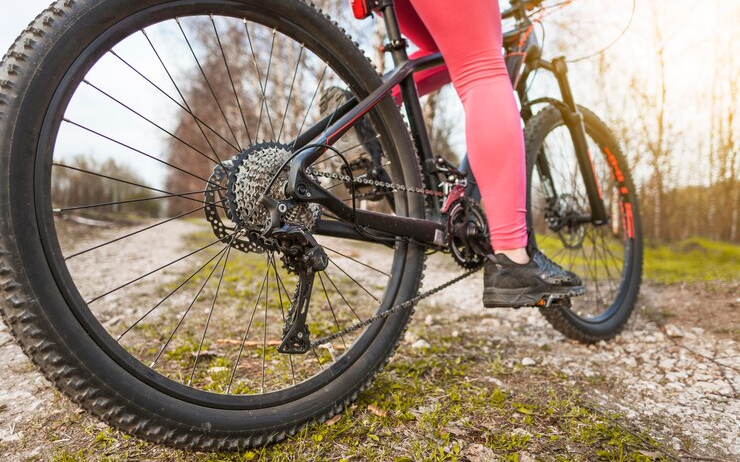
Let’s discover the most common wheel sizes and understand their applications.
20-inch Wheels
Compact and sturdy, 20-inch wheels are designed for agility and quick turns. Their smaller diameter makes them highly maneuverable, and perfect for tricks and jumps. Predominantly found on BMX bikes, these wheels are tailored for skate parks, dirt tracks, and street riding where agility is crucial.
24-inch Wheels
A transitional size, 24-inch wheels offer a balance between stability and maneuverability. They’re large enough to handle varied terrains but still manageable for younger riders. Ideal for youth mountain bikes, these wheels cater to pre-teens and teenagers venturing into trail riding.

26-inch Wheels
Once the gold standard for mountain biking, 26-inch wheels are nimble and offer quick acceleration. Their size allows for responsive handling in tight trails. While they’ve been somewhat overshadowed by larger sizes, 26-inch wheels remain popular for classic mountain bikes and some urban bicycles.
27.5-inch (650b) Wheels
Bridging the gap between 26-inch and 29-inch wheels, the 27.5-inch size combines the best of both worlds. They offer better rollover capabilities than the 26-inch and more agility than the 29-inch.
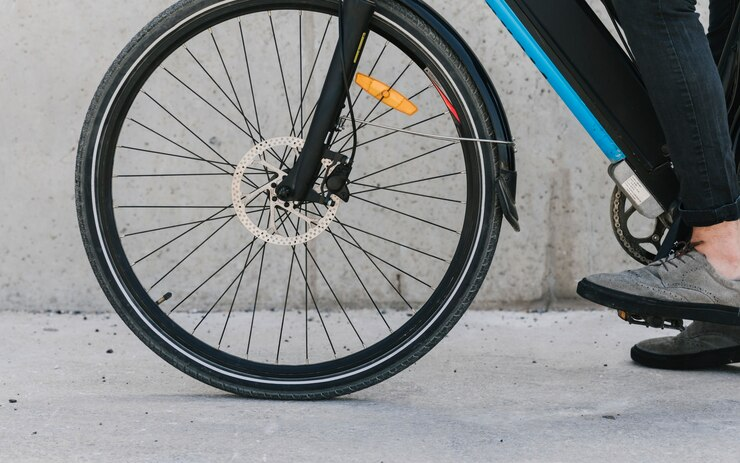
Their rise in popularity can be attributed to their versatility. Moreover, these are commonly found on modern mountain bikes, catering to riders seeking a balanced performance.
29-inch (700c) Wheels
With a larger diameter, 29-inch wheels provide superior rollover, making them ideal for overcoming obstacles. They maintain momentum well and offer a smoother ride. While they’re a staple for road bikes, 29-inch wheels (often termed 29ers) have also carved a niche in mountain biking, especially for cross-country and trail riding.
Other Sizes
While the sizes mentioned above dominate the market, there are other niche sizes catering to specific needs. For instance, the 650A (590mm) is sometimes used for certain touring bikes, while the 650C (571mm) finds its place in smaller road bikes and triathlon bicycles. Each size serves a unique purpose in the vast cycling landscape.
Pros & Cons of Different Wheel Sizes
Picking the right wheel size for your bike isn’t a one-size-fits-all choice. Different sizes have their own good and not-so-good points, and knowing these can really change how you enjoy your ride.
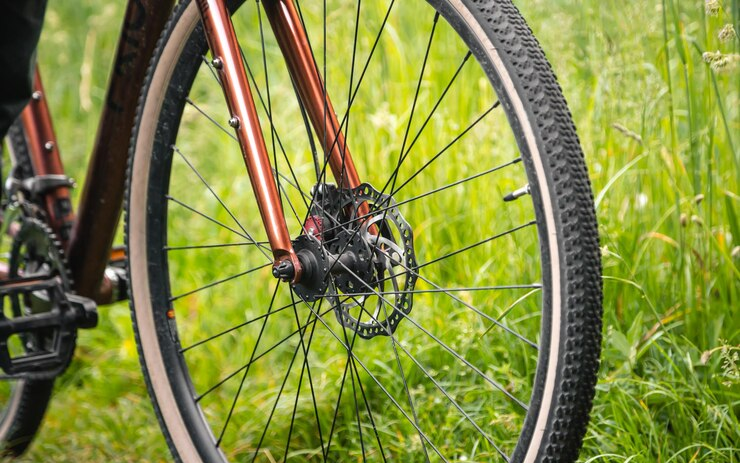
Let’s discuss the pros and cons of both smaller and larger wheels, and how they affect things like speed, maneuvering, and comfort.
Smaller Wheels
| Pros | Cons |
|---|---|
| Ideal for tight spaces and quick turns, excelling in agility for BMX and youth mountain bikes. | Struggle on rough terrains, leading to less comfort and stability. |
| Requires less effort to accelerate, and is best for short bursts. | It may reach top speed sooner than larger wheels. |
| Sturdier and more durable due to shorter spokes and smaller size. | Provide less shock absorption on uneven surfaces, resulting in a bumpier and less comfortable ride. |
Larger Wheels
| Pros | Cons |
|---|---|
| Maintain speed effectively, and roll over obstacles for faster and smoother rides. | Less nimble in tight corners, may require more effort for quick maneuvers. |
| Provide improved stability, and absorb bumps for a more comfortable ride. | Takes more energy to accelerate, which can be a drawback in stop-and-go traffic or on steep hills. |
| Can be less nimble in tight corners, and requires more effort for quick maneuvers. | Typically heavier, affecting overall bike weight and handling. |
How to Measure & Fit for the Right Wheel Size?
Selecting the perfect size isn’t a guessing game; it’s a science. To ensure that your cycling experience is comfortable and efficient, it’s essential to match your bike’s wheel size to your body’s proportions and your riding style.
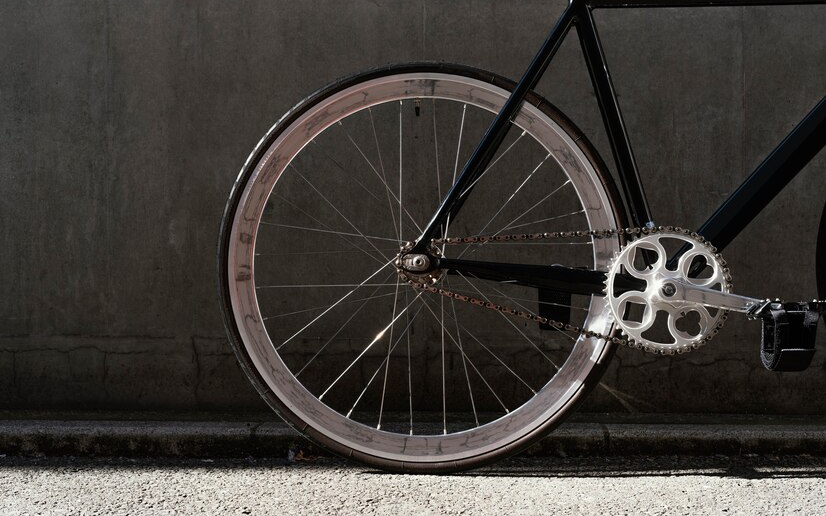
Follow these steps to find out what bike wheel size do i need for my height.
1. Measure Your Inseam
The inseam measurement is a crucial factor in determining the right wheel size for your bike. To measure your inseam accurately, follow these steps:
- Stand upright with your back against a wall, wearing the shoes you typically ride in.
- Place a book or flat object between your legs, positioning it as if you were sitting on a saddle.
- Make sure the book is parallel to the floor and snugly against your pubic bone.
- Measure the distance from the top of the book to the floor in centimeters or inches. This is your inseam measurement.
2. Correlate Inseam to Wheel Size
Once you have your inseam measurement, you can use it to determine the appropriate wheel size. Here’s a general guideline:
- Inseam less than 70cm or 27.5 inches: Consider a bike with 20-inch wheels for a comfortable fit.
- Inseam between 70-80cm or 27.5-31.5 inches: Go for a bike with 24-inch wheels for a balanced fit.
- Inseam between 80-90cm or 31.5-35.4 inches: Look for a bike with 26-inch wheels, which offers versatility for various riding styles.
- Inseam between 90-100cm or 35.4-39.4 inches: Consider a bike with 27.5-inch (650b) wheels for improved rolling capabilities.
- Inseam over 100cm or 39.4 inches: Go for a bike with 29-inch (700c) wheels for enhanced stability and speed.

3. Test Ride and Adjust
Test ride bikes with different wheel sizes to gauge how they feel. Pay attention to factors like:
Comfort: Does the bike feel comfortable to ride for an extended period?
Handling: How responsive is the bike to your movements?
Speed: Can you achieve the speed you desire comfortably?
Stability: Do you feel stable on the bike, especially when navigating corners and rough terrain?
Moreover, pay attention to the bike’s responsiveness and maneuverability during your test rides. Assess how the bike handles tight turns, accelerates, and maintains stability on varying terrains. Don’t overlook the importance of braking efficiency and how quickly the bike responds to your commands.
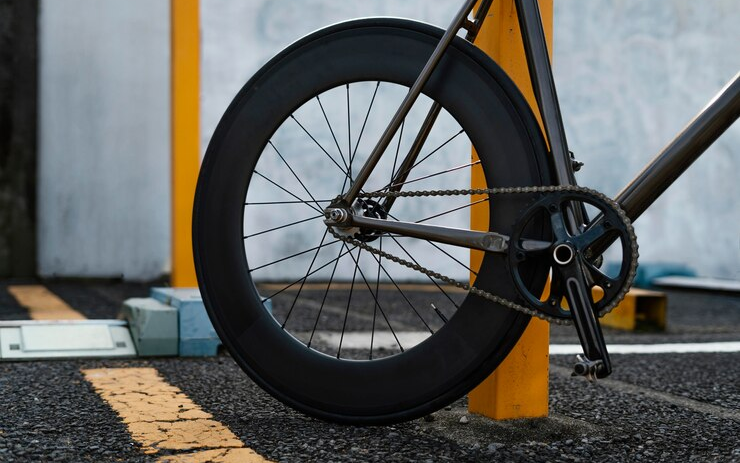
These details are crucial for ensuring a safe and enjoyable riding experience. Remember, the right wheel size is not just about measurements; it’s about the dynamic interaction between you and your bike.
Take a moment to grasp the details, make small adjustments, and fully enjoy your cycling adventures.
Conclusion – What Bike Wheel Size Do I Need?
The choice of the right wheel size isn’t just a technicality; it’s a decision that intimately shapes your riding experience. As we wrap up this exploration, it’s essential to emphasize the significance of selecting the right wheel size. Your comfort, performance, and safety all depend on this choice.
So, remember, when in doubt, prioritize comfort. Don’t rush the decision. Test ride, measure, and adjust until you find that sweet spot where the bike feels like an extension of you.
Whether you opt for the agility of smaller wheels or the stability of larger ones, the journey is about finding your perfect fit and savoring the joy of each ride.
FAQs
The most common wheel size for adult bikes is 27.5 inches (650b) for mountain bikes and 700c for road bikes.
Yes, larger wheels can increase speed due to improved momentum and smoother rolling over obstacles.
Not necessarily; smaller wheels can be agile, but they may have limitations on rough terrain.
26-inch bikes are typically suitable for teenagers and adults, depending on the specific bike type and frame size.



